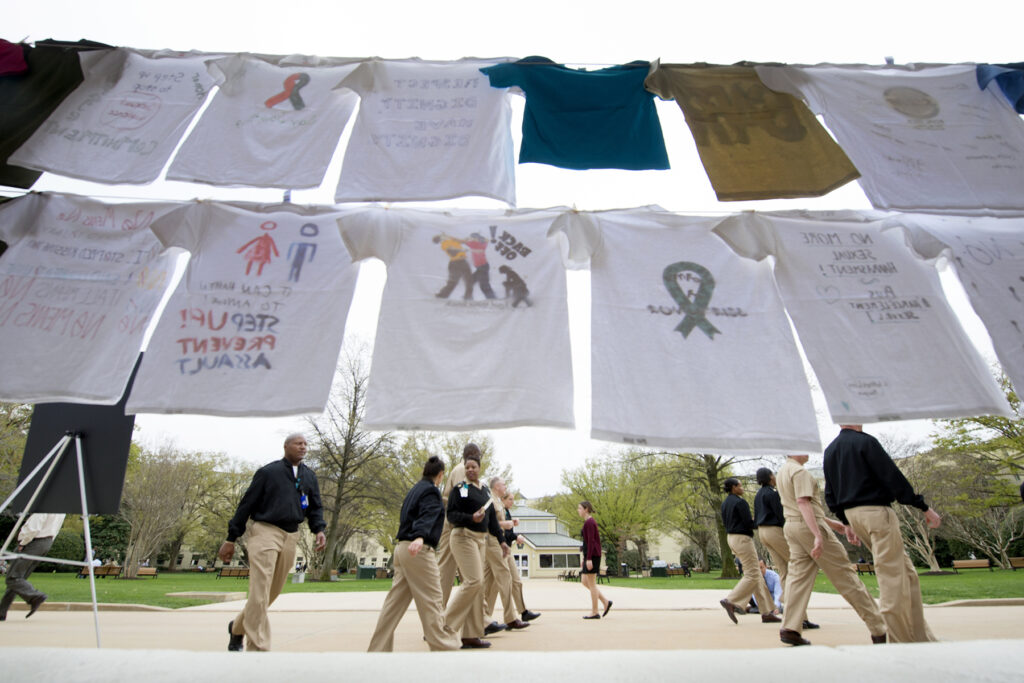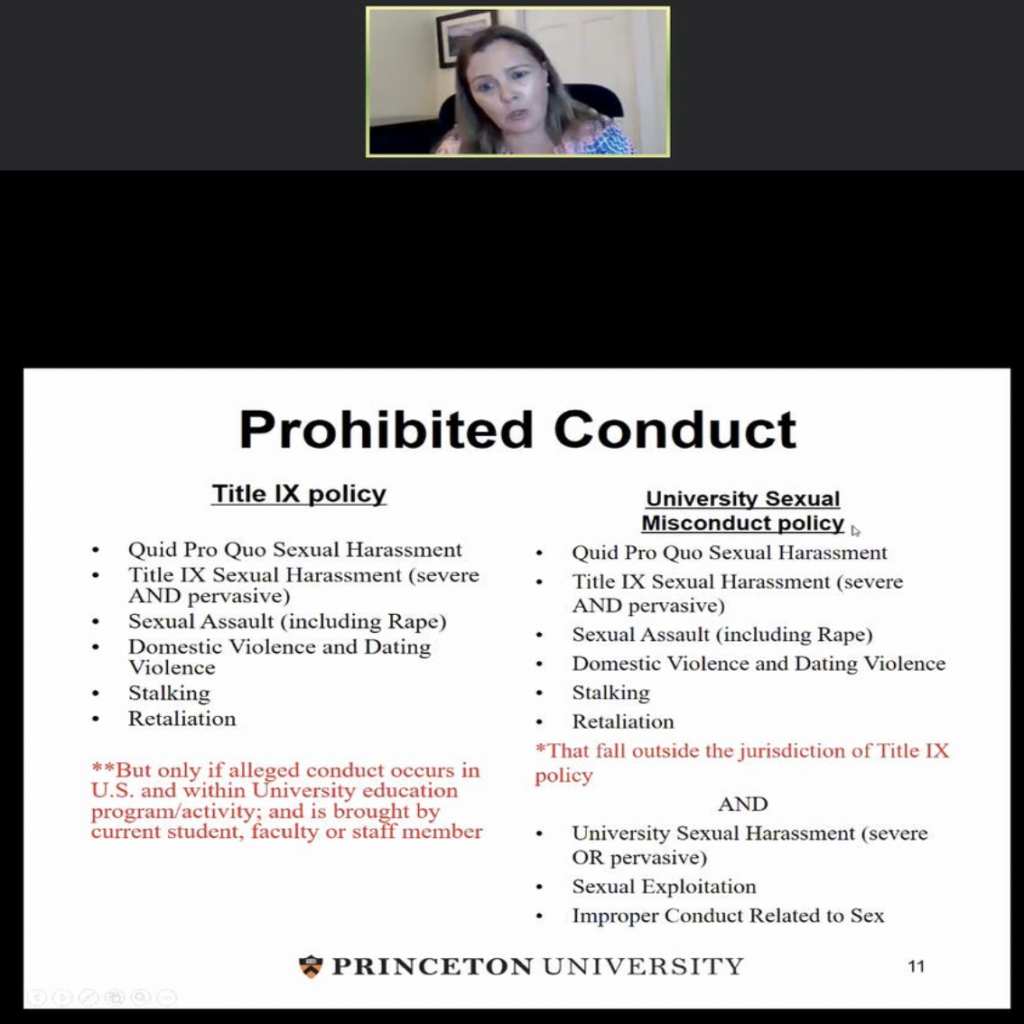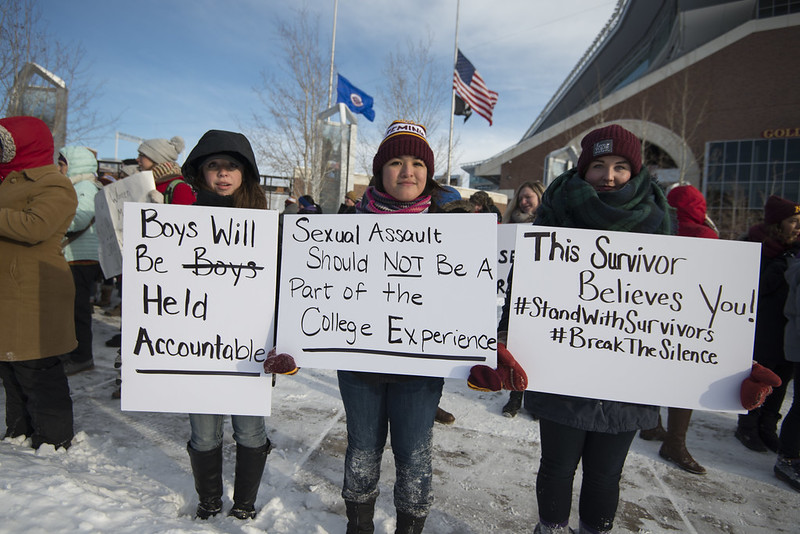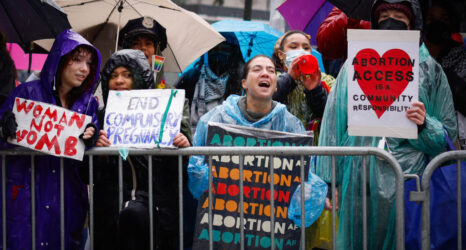
Despite legal challenges, the Trump administration’s new Title IX regulations rolling back protections for survivors of sexual harassment and assault at schools and universities went into effect Friday, August 14. Schools across the country are now releasing revised sexual harassment and assault policies.
The Trump rules make it much harder for survivors to bring charges for sexual harassment and assault by narrowing the definition of sexual harassment, requiring a live hearing, forcing survivors to be subject to live cross-examination by a representative of the accused, and allowing the exclusion of survivors’ testimony if they refuse to be cross-examined.
And they allow schools to resolve cases involving students through mediation rather than investigation—which was prohibited by the Obama administration, since mediation assumes a level playing field which does not exist between a survivor and perpetrator.
The new rules also allow schools to require survivors to prove their allegations by “clear and convincing evidence,” a higher standard than the usual “preponderance of the evidence” standard used in most other disciplinary matters on campus. And they exempt most online sexual harassment as well as sexual misconduct that takes place outside of the United States (e.g. study abroad programs) or that did not occur within a university program or activity (e.g. off-campus housing), even if it impacts the survivor’s education.
Most school officials were opposed to these changes—and rightly so. They remove major categories of misconduct from schools’ jurisdictions. And they introduce complicated legal questions and procedures that will require the officials involved—who are usually university administrators and regular faculty members—to have significant legal training.
“Even well-meaning and diligent university faculty and staff members cannot serve as competent hearing officers under the revised regulations, at least not without robust training that campus officials will have trouble providing,” says Professor Ben Trachtenberg from University of Missouri School of Law.
If schools follow the new rules, survivors no doubt will be reluctant to report sexual harassment and assault.
While some schools are accepting the rules and adopting restrictive policies, others are finding creative ways to get around the rules by designing policies that will minimize these harmful effects.
We examined a few of these new policies—here’s what we found.
Stanford University: Following Trump’s Lead, So Far

Stanford has issued a draft policy that adopts an extremely narrow definition of sexual harassment and assault (some say narrower than the Trump administration regulations) and employs strict standards for adjudication, including live hearings and cross examination of the parties. The proposal uses the “preponderance of the evidence” standard (more likely than not) rather than the higher “clear and convincing evidence” standard, allowed by the new regulations.
According to the proposal, hearings are overseen by a “neutral” hearing officer, unaffiliated with Stanford, who is experienced and trained in adjudicating matters of civil rights, sexual harassment and/or sexual violence, such as a retired judge. For students, Stanford will provide up to two hours of consultation with an attorney from the hearing panel.
Stanford promises in the future to adopt policies that extend beyond the new federal regulations.
“Stanford is committed to ensuring an appropriate response to all allegations of sexual harassment and assault that occur within a Stanford program or activity, including acts that do not fall within Title IX’s scope,” said Lauren Schoenthaler, senior associate vice provost for institutional equity and access.
Princeton University: Making an End Run

Princeton is attempting to get around the guidelines by developing two policies—a Title IX policy and a University Sexual Misconduct policy.
The Title IX policy will addresses cases that fall under the narrowed definition and application of Title IX, whereas all other types of behavior will fall under the University Sexual Misconduct policy, including conduct associated with University-sponsored activities outside of the U.S.; conduct involving the use of University computing, network resources, and email accounts; and sexual misconduct that occurs within eating clubs or elsewhere in the local vicinity. According to the university, “Conduct that violated [u]niversity policy last year will continue to violate [u]niversity policy this year but … may be adjudicated under two different grievance procedures.”

Whereas Title IX adjudications will use the live hearings and cross-examinations required by the Trump regulations, university sexual misconduct policy cases can rely on written cross-examinations. Both new policies have separate investigators and adjudicators and will use the preponderance of the evidence standards.
Princeton also now offers students the option of a “voluntary, remedies-based” process tantamount to mediation of sexual harassment and assault cases, an approach prohibited by the Obama rules.
The university will also provide students, staff and faculty with “predetermined financial resources to assist students, faculty and staff to engage with attorneys to serve as their advisers.”
University of Michigan: Two Types of Misconduct, One Set of Procedures

In addition to private schools like Stanford and Princeton, public universities like UT Austin and University of Michigan are also issuing guidelines in response to the new rules.
The University of Michigan has adopted a policy with two types of prohibited misconduct:
“Title IX misconduct,” conforms to the narrow definition set forth by the Trump rules.
“Sexual and gender-based misconduct” is broader, and includes unwelcome sexual conduct that wouldn’t otherwise qualify. It also covers conduct that the new rules would exclude because it did not occur in “a university program or activity” or “against a person in the United States.”
The University of Michigan’s new procedure allows it to address both types of conduct. But for cases that don’t meet the new requirements, the university will still use the same restrictive procedures—including live hearings with cross-examination of parties—that it must now use for its Title IX cases.
No matter which type of misconduct is alleged, the university will use the lower preponderance of the evidence standard when determining whether the accused should be held responsible.
The university is also providing an alternate “adaptable resolution” process for either type of misconduct complaint—a form of mediation that was prohibited by the Obama guidelines. According to the university, adaptable resolution results in “no formal disciplinary action against” an alleged perpetrator.
Michigan is careful not to describe the process as a mediation—instead, it says the adaptable resolution procedures take the form of a “facilitated interaction,” either direct or through intermediaries, “with the goal of creating a plan or agreement to repair the harm (to the extent possible).”
The Fight Continues
Advocates are still fighting in court to stop the Trump administration regulations.
On August 9, a federal court in New York issued an order refusing to stop the regulations from going into effect in a lawsuit brought by the State of New York and a D.C. federal court did the same on August 13 in a lawsuit brought by 17 state attorneys general. Another lawsuit brought before a Maryland court by the ACLU and survivors’ advocacy groups is still pending.
A recent study of college-aged people between 18 and 24 showed that women were more likely than men to report both sexual harassment (37 percent, versus 22 percent) and sexual assault (36 percent, compared to 16 percent) during early adulthood.

Moreover, sexual harassment experiences predicted sexual assault victimization. According to researchers, this “evidence that sexual harassment is strongly associated with sexual assault victimization of young adults highlights the importance of naming and stemming early behavioral transgressions across the US population.”
In other words, tolerating sexual harassment is opening the door to sexual assault.
This study makes it clear why it’s so important to have strong policies to address a wide range of sexually harassing behavior—a point not missed by at least some colleges. Hopefully others will follow their lead.





